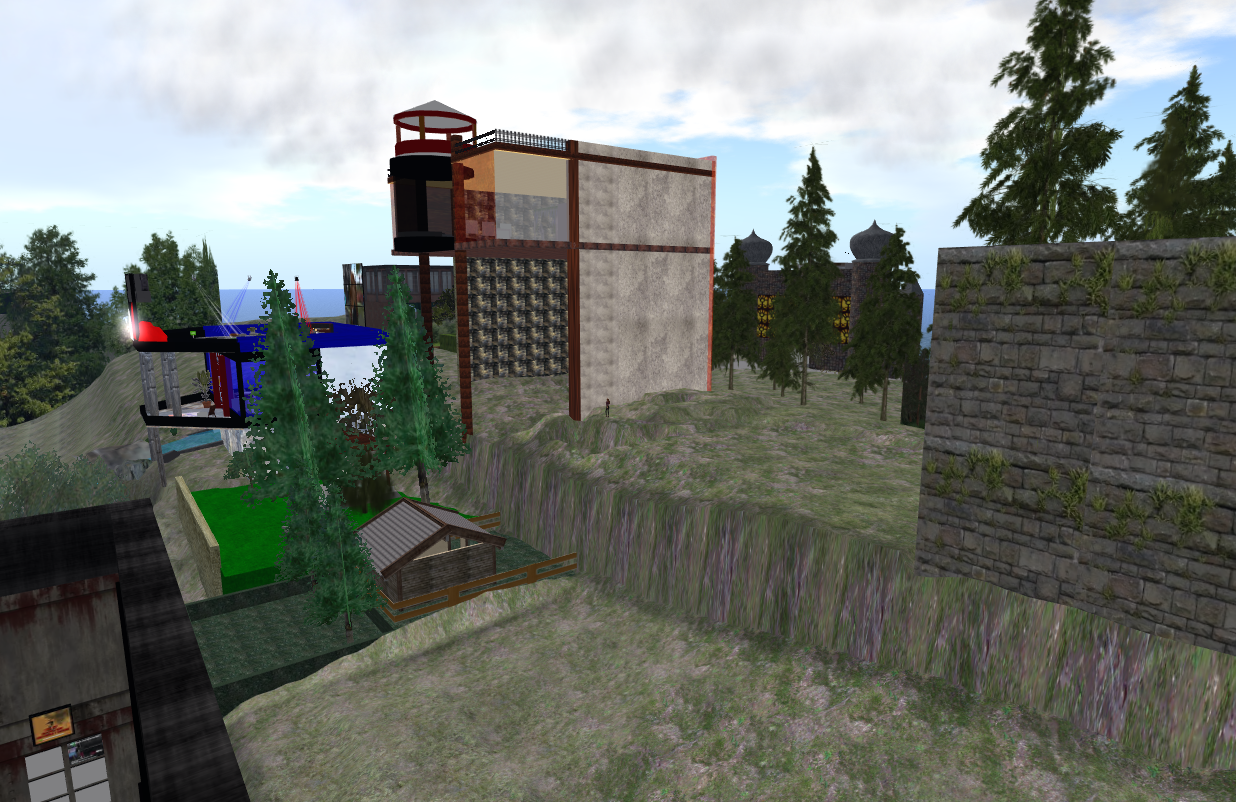So what went wrong on the above scenarios? In both cases I assume the best possible intentions: people who are charismatic, enthusiastic, optimistic, good planners and organisers, definitely drama-free, caring much more about other people and having fun than making “lots of money” — all attributes that tend to make residents gravitate to them. They’re loved by their friends and community; they’re praised by everybody else; they’re seen as good, positive examples about how SL ought to be. And they both missed the point: doing business in SL is hard, but not for the reasons they thought.
Both were, of course, hit by seasonal changes (which is the typical scenario; ask around your friends, you’ll see that most community projects will close down after the summer, while most content creators will shutdown their business in the early spring. There are, naturally, exceptions, of course). And this was interpreted as “SL’s upcoming downfall” with hordes of people leaving, so it was better to pack and go before losing more time and money on SL.
But “hordes of people” are not leaving.
If we can believe Tateru Nino’s analysis of SL’s statistics (she usually is quite correct in those), there is not much growth. The nice graphic illustrating her article is misleading — it shows a huge growth during the 2006-2007 years, to fall “slightly under the curve” in recent months. Although Tateru labels her chart, most people — and by this I mean journalists and bloggers — tend to interpret things wrongly. Her chart shows percentage of relative growth and not absolute numbers. This basically means that if you got 150 new users per day in mid-2004, when you had just 15.000 residents, that would be a growth of the user base 1% per day — a huge exponential growth.  These days, you get an average of 10.000 new users per day, every day. This means that the whole population of early 2004 would be joining up for SL in just 24 hours!
These days, you get an average of 10.000 new users per day, every day. This means that the whole population of early 2004 would be joining up for SL in just 24 hours!
However, relatively speaking, that’s just a growth of 0.066% per day (since we currently have about 15 million registered users), which is rather unimpressive — a growth fifteen times slower than in 2004!
What this means is that if you draw a curve representing the relative growth of Second Life in mid-2008, you’ll have an angle fifteen times more shallow than in mid-2004. But that’s not really “worrying”! It just means that, as more and more residents join, and the pace of subscription stays about the same (since late 2006 it has always been 10-15,000 new users per day, it hasn’t change a lot), the rate of growth will be smaller and smaller.
Where do all these people go? If 300 to 500 thousand new users join SL every month (!), where are they? Aren’t these all fake accounts? (A frequent claim, but obviously false) Or do people just register once and never come back again? (A claim that is better backed up by LL’s official statistics, since the number of unique residents logging in per week rarely goes over half a million, and that has been the case since 2006 as well) Still, they have to go somewhere first, haven’t they?
Where are they?
Again, the ever-observant Tateru Nino provides the explanation. Second Life’s landmass is huge — compared to the number of people simultaneously logged in at the same time. She goes through the numbers showing why Second Life’s population density is so low and provides some thoughts on why that happens: purely psychological profiling shows that most SL residents may simply dislike being in very busy and crowded areas, and prefer to spread around. The result is simple: on 30,000 or so regions you get at most 70,000 residents simultaneously, or little over an average of 2 per region. That means that if you get a 100-resident-event happening on part of the grid, 50 regions will, on average, be empty. Psychologically what this shows is that those 70,000 residents tend to be clumped on a few dozens of groups of 10-100 people, spread across the world, and that the vast majority of Second Life will be, well, mostly empty.
There is simply no way you can get a “feeling” of all those 10,000 new users coming in to SL every day. They aren’t a crowd. They are completely missed, except by a few who might be watching LL’s infohubs — but there are so many of those that you don’t get the feeling that a new avatar is joining SL every seven seconds. In the olden days when you just had a single welcome area and got a newbie perhaps every 10-15 minutes or so, it seemed that SL was positively growing like crazy, since you barely managed to greet them, set them up, exchange a few tips, and a new one was dropping in-world next. These days you would have to be very very lucky to find where a newbie drops in-world among 30,000 possible locations.
So new users are, indeed, entering SL, at a furiously fast-paced rate that oldbies from the golden days could not possible imagine. But they all avoid being spotted in-world. A tiny minority will be around for a few hours. That’s the attention span you need to catch their attention.





